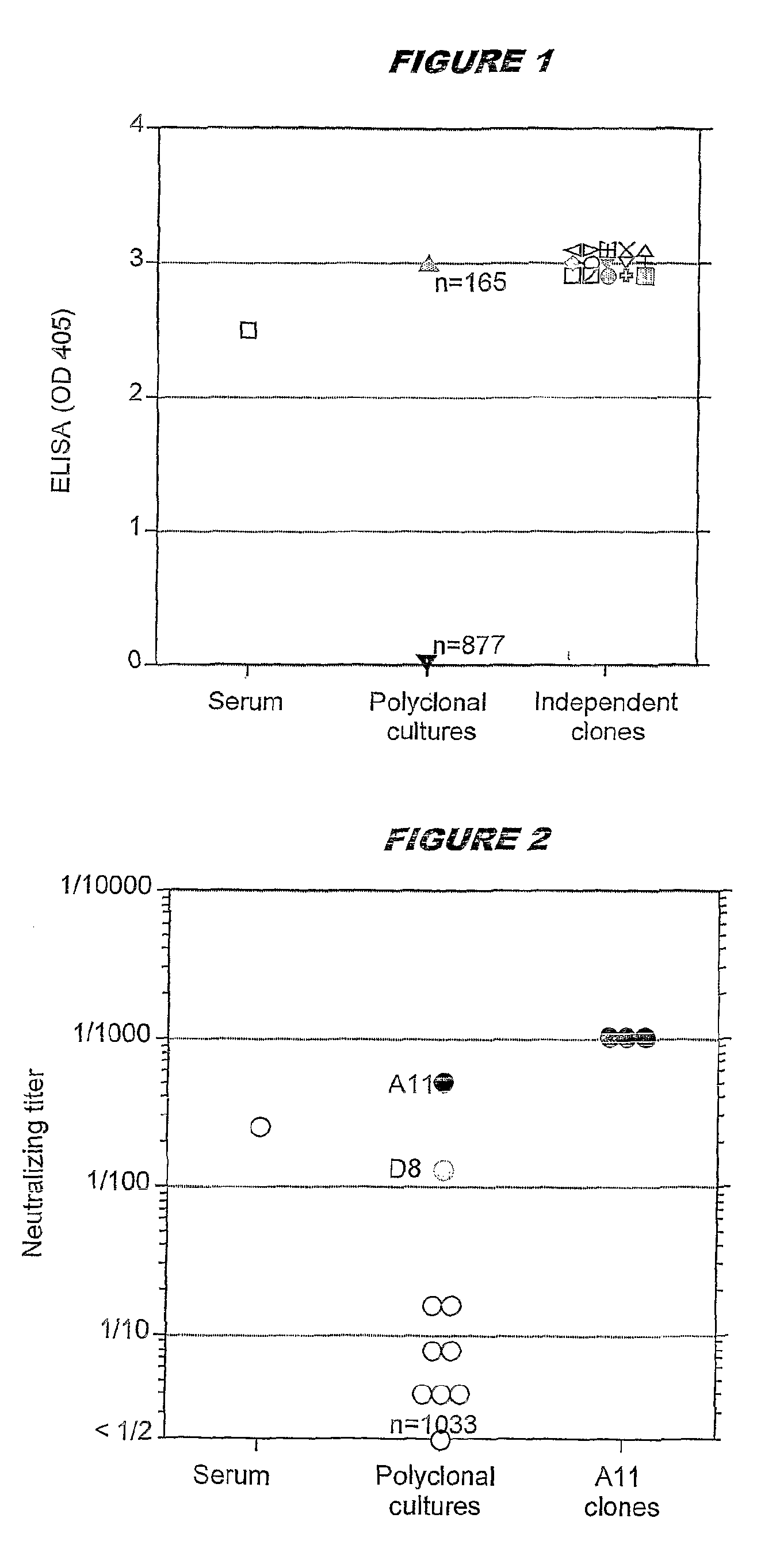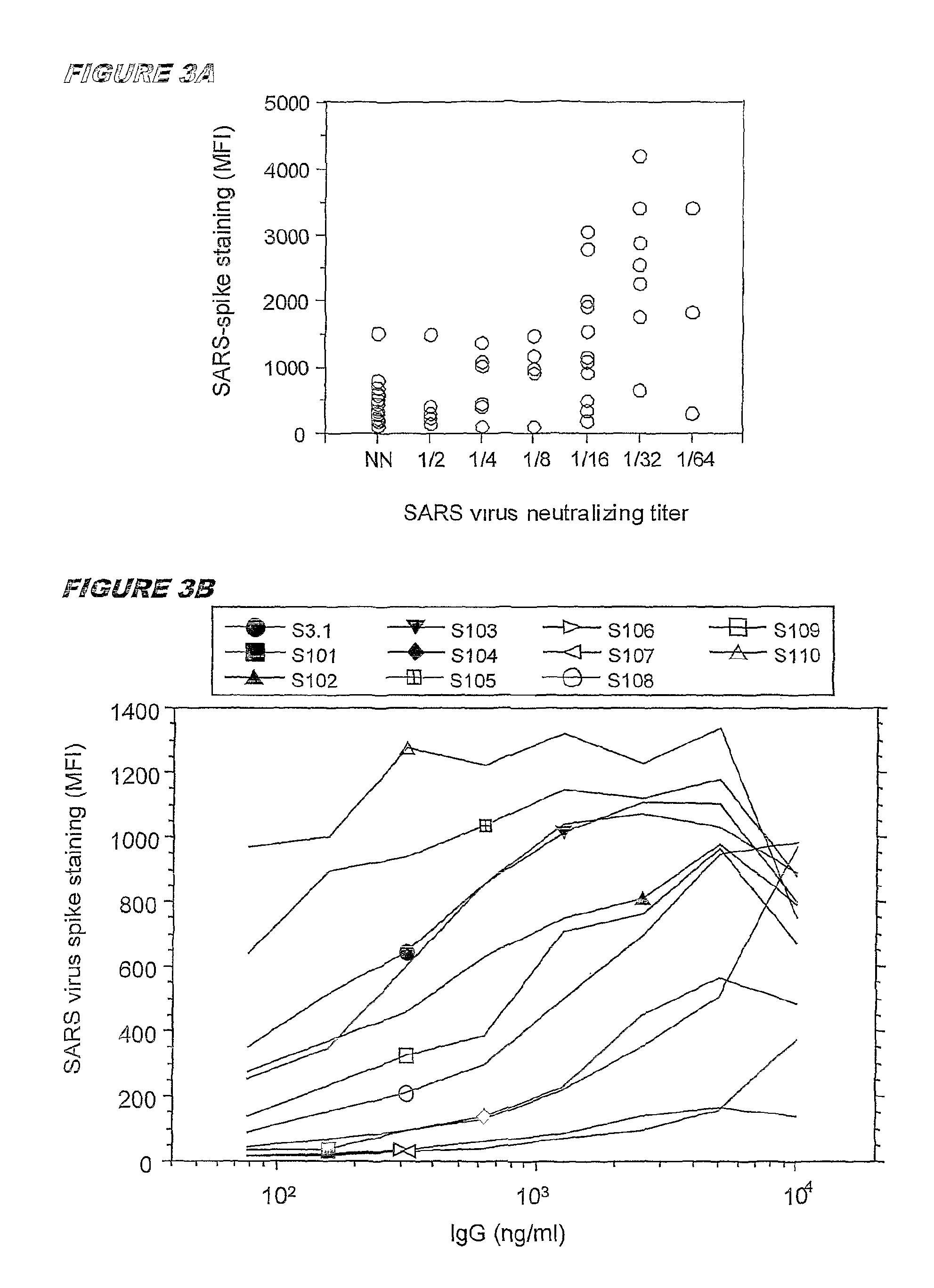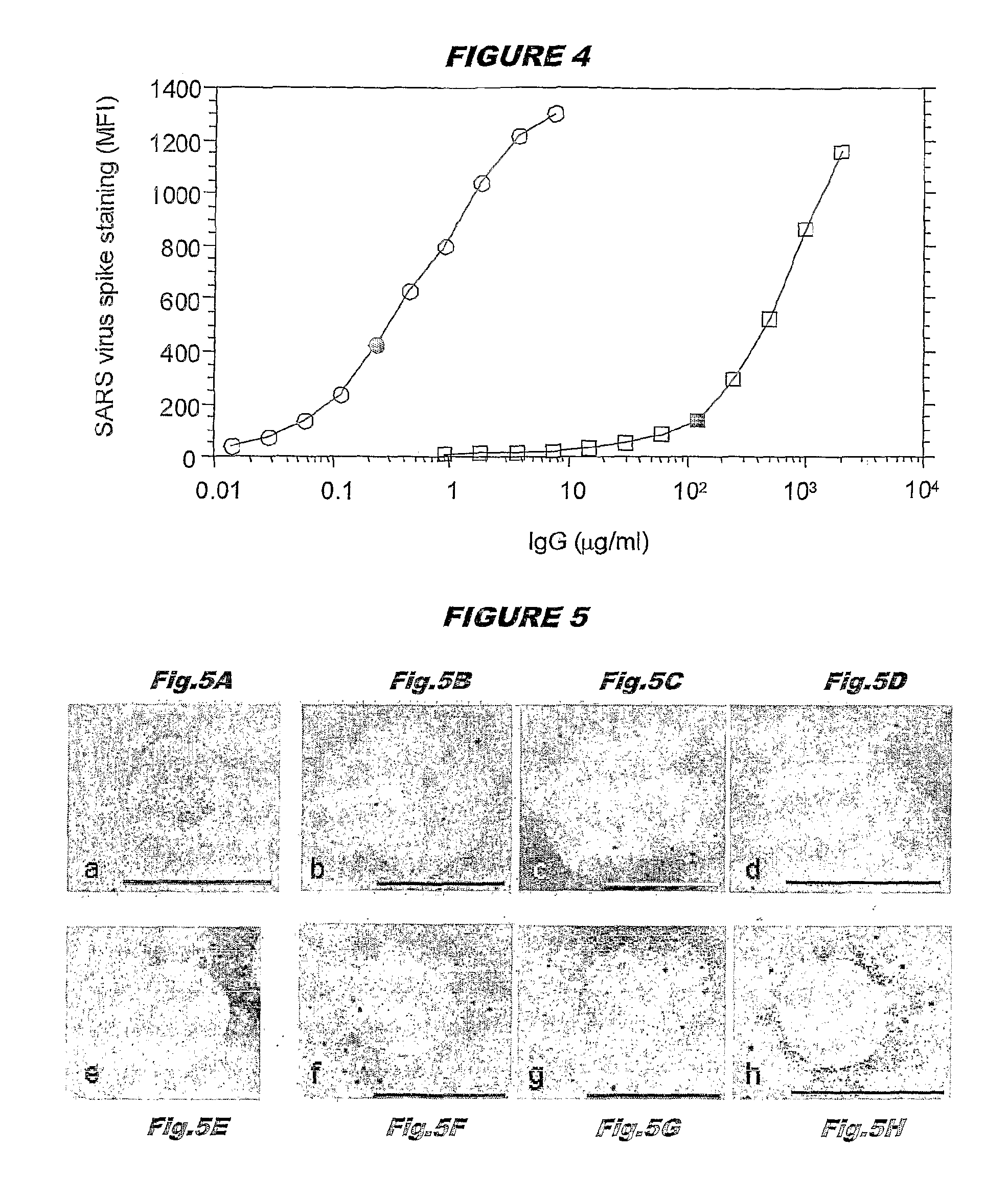Monoclonal antibody production by EBV transformation of B cells
a technology of b cell and monoclonal antibody, which is applied in the field of monoclonal antibodies, can solve the problems of ebv-based method, low efficiency of immortalization, and hampered this approach in the human system
- Summary
- Abstract
- Description
- Claims
- Application Information
AI Technical Summary
Benefits of technology
Problems solved by technology
Method used
Image
Examples
example 1
Cloning of B Cells
[0110]Human memory B cells (CD19+ CD27+ IgM− IgD−) were isolated from healthy donors by cell sorting using methods well known in the art. Different numbers of cells were seeded in replicate cultures in 96 well microplates in the presence of irradiated mononuclear cells (5×105 / ml) and either E13V (supernatant of B95-8 cells) alone or EBV in combination with CpG 2006 (2.5 μg / ml) and recombinant IL-2 (1000 U / ml). After 15 days the percentage of cultures containing growing cells was scored. Frequencies were determined by limiting dilution assays. Cultures were scored for growing cells. Cloning efficiency using four different sources of B cells were as follows:
[0111]
Cloning efficiencyB cell sourceEBVEBV + CpG + IL-2Exp 1 (CD19+ CD27+ IgM− IgD−)1 in 2001 in 1Exp 2 (CD19+ CD27+ IgM− IgD−)1 in 1201 in 1.5Exp 3 (CD19+ CD27+ IgM− IgD−)1 in 601 in 1Exp 4 (CD19+ CD27+)1 in 901 in 1.6
[0112]No growth was observed in the absence of EBV.
[0113]Thus the methods of the invention allo...
example 2
Production of Antibodies with a Desired Specificity
[0114]In a further experiment it was demonstrated that the immortalisation can be used to exploit immunological memory to produce human monoclonal antibodies of the desired specificity.
[0115]Mononuclear cells were isolated from 20 ml peripheral blood obtained from a healthy blood donor. CD19+CD27+IgG+ human memory B cells were isolated by cell sorting and seeded at 10 cells / well in 96 well microplates in the presence of EBV, CpG 2006 (2.5 μg / ml), recombinant IL-2 (1000 U / ml) and irradiated mononuclear cells (5×105 / ml). Seeding only 10 cells per well helps to increase cloning efficiency. After 15 days all cultures contained growing cells. A sample of supernatant was collected and tested in ELISA for total IgG antibodies and for IgG specific for Toxoplasma gondii, tetanus toxoid and measles virus. The supernatants were also tested in a measles virus neutralization assay using Vero cells as targets.
[0116]Some of the positive cultures i...
example 3
Immortalised Memory B Cells that Express Antibodies Specific for SARS Coronavirus
[0119]Blood samples were obtained from two patients with a clinical record of SARS. Both patients had serum anti-SARS antibodies as detected by two assays: (i) a neutralization assay which detects neutralizing antibodies directed against surface proteins of the SAGS virus, likely the spike protein and (ii) an ELISA assay, that detects antibodies binding to any denatured protein of the SARS virus.
[0120]For the neutralization assay, serial dilutions of serum obtained from the blood were added to microplate wells containing Vero cells, followed by titrated amounts of SARS virus. After 2 days, the cytopathic effect was recorded by visual inspection. A conventional ELISA was also developed using SARS virus infected Vero cells lysed in 3% SDS as the antigen.
[0121]For the production of the clone of B cells producing monoclonal antibodies specific for the SARS virus, blood from the patient showing the higher ti...
PUM
| Property | Measurement | Unit |
|---|---|---|
| concentrations | aaaaa | aaaaa |
| concentration | aaaaa | aaaaa |
| concentrations | aaaaa | aaaaa |
Abstract
Description
Claims
Application Information
 Login to View More
Login to View More - R&D
- Intellectual Property
- Life Sciences
- Materials
- Tech Scout
- Unparalleled Data Quality
- Higher Quality Content
- 60% Fewer Hallucinations
Browse by: Latest US Patents, China's latest patents, Technical Efficacy Thesaurus, Application Domain, Technology Topic, Popular Technical Reports.
© 2025 PatSnap. All rights reserved.Legal|Privacy policy|Modern Slavery Act Transparency Statement|Sitemap|About US| Contact US: help@patsnap.com



